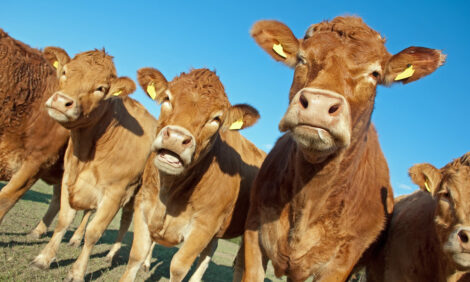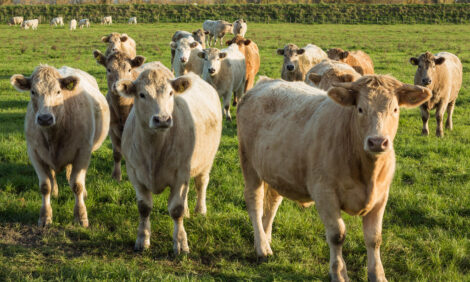



Loss of Production from Age at First Calving
UK - The age at first calving of beef heifers in England has remained remarkably consistent in recent years at around 34 months of age, representing a significant potential loss of productivity, latest EBLEX analysis has revealed.BCMS data shows that the age of first calving remained around the 34 month mark from 2004 to 2010, despite research showing that calving heifers at two years old produces more calves than waiting until heifers are three years of age or older.
Senior Livestock Scientist, Dr Mary Vickers for EBLEX: "There is also evidence to suggest that longevity in the herd is not related to age at first calving. Therefore, calving later than two years of age potentially equates to a loss of productivity, as those females are likely to have fewer calves in their lifetime. It also means more replacements are needed on the farm in any one year, using up resources that could otherwise be used by productive cows."
Calving at 24 months requires heifers to be served when they are 65 per cent of their mature body weight and they then calve down at 85 per cent of mature cow weight. For example, if a mature cow weighs 650kg, then the target weight for first service at 15 months of age would be 425kg.
This requires an average liveweight gain from birth to service of around 0.9 kg per day, which should be achievable. In addition to reaching the target liveweight, it is important that heifers have grown sufficient frame and have sufficient body condition (2.5-3) at breeding time. Ideally they should have had two oestrus cycles before the start of the breeding season.
"Heifer replacements should also be chosen on the basis of physical fitness and temperament. In addition, selection for fertility is possible during the heifer breeding season by only allowing the bull to run with the heifers for six weeks and then breeding only from those heifers that are in calf and as such have proven themselves to be very fertile.
"The use of an easy calving bull is critically important with heifers to safeguard their welfare and their fertility. Having conceived it is important young heifers are fed to grow themselves as well as their calf and ideally managed as a group separate to the main herd."
| TheCattleSite News Desk | Read more EBLEX News here |


